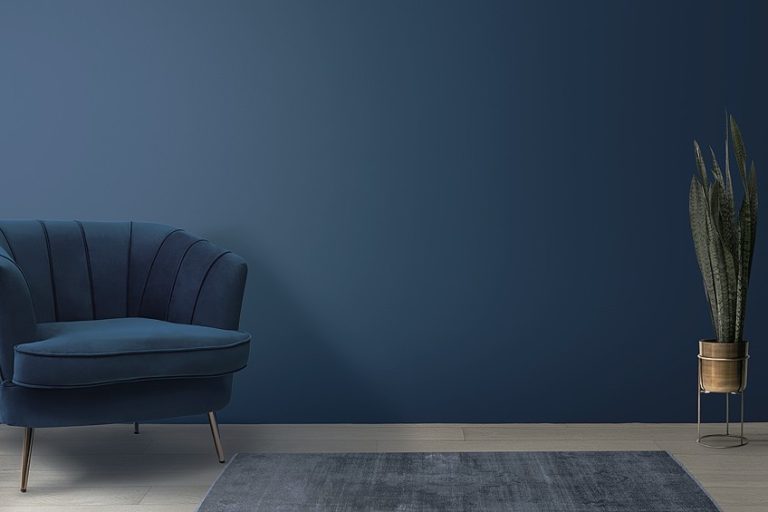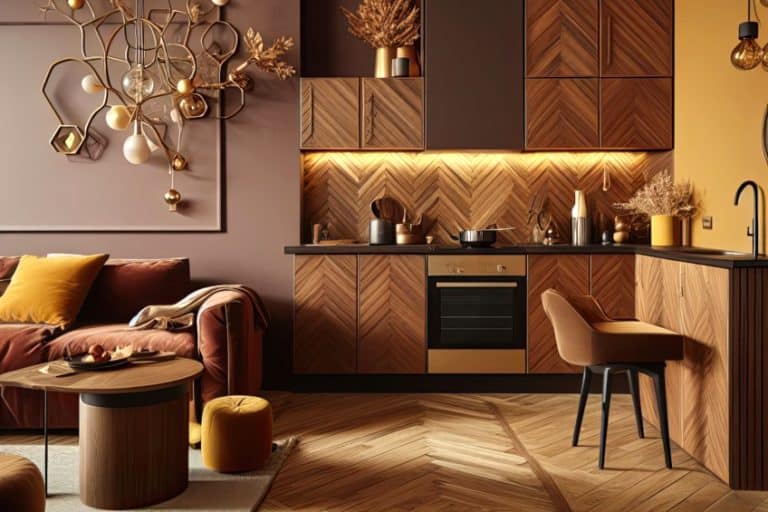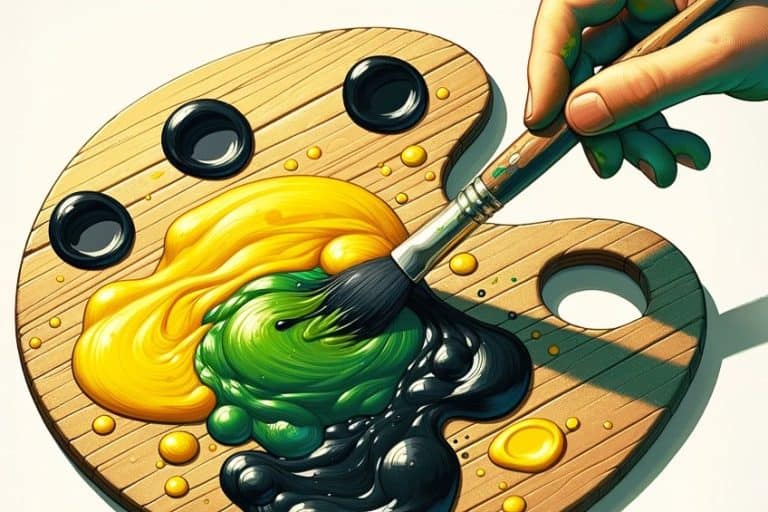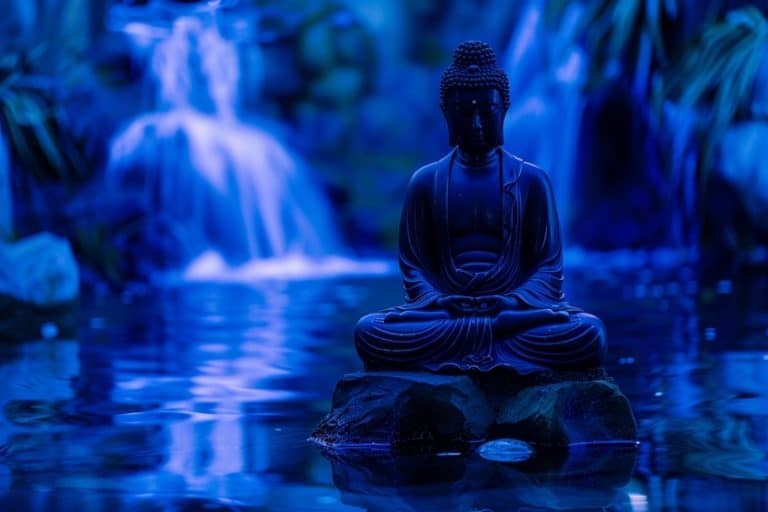What Color Does Blue and Orange Make? – Mix Shades of Brown
Blue and orange are natural opposites, just like fire and ice, which makes it quite a popular sports team color. Because of this contrast, blue and orange are also used in a lot of action movies. So, we know that these two colors work well together, but blue and orange mixed is another story. In this article, we will be looking into what happens when you mix these two opposing colors. Let us get to it!
What Color Do Blue and Orange Make?
Before we get into the nitty gritty stuff, let us quickly look at what occurs if you create a combination of blue and orange. Even though you use different shades of orange or blue, you will always land up with a shade of brown. However, pure colors in equal proportions can produce a darker, almost black color. Below are just a few examples of the different types of browns you can get.
Take note that these graphic colors may not look quite the same as paint colors, but they are the closest representation.
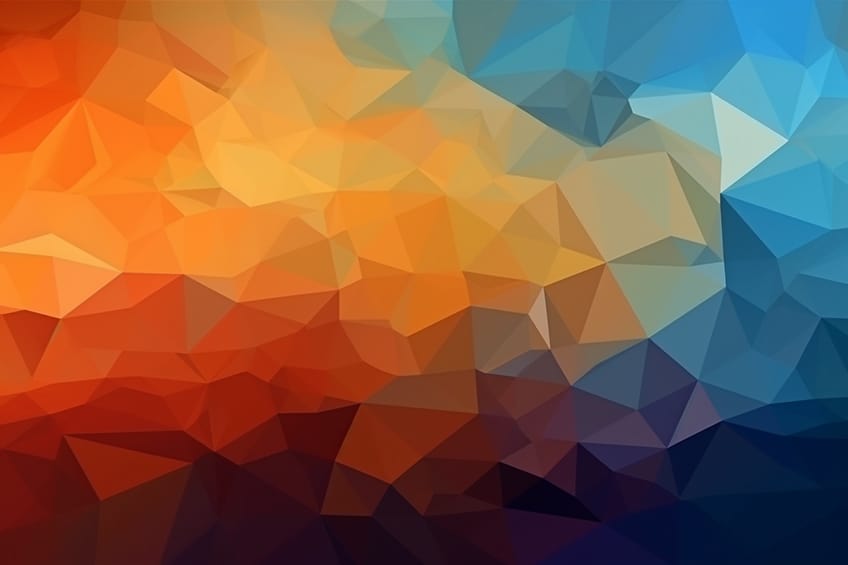
| Shade | Hex Code | CMYK Color Code (%) | RGB Color Code | Color |
| Blue | #0000ff | 100, 100, 0, 0 | 0, 0, 255 | |
| Orange | #ffa500 | 0, 35, 100, 0 | 255, 165, 0 | |
| Brown | #a52a2a | 0, 75, 75, 35 | 165, 42, 42 | |
| Burnt Sienna | #e97451 | 0, 50, 65, 9 | 233, 116, 81 | |
| Umber | #635147 | 0, 18, 28, 61 | 99, 81, 71 | |
| Chocolate | #d2691e | 0, 50, 86, 18 | 210, 105, 30 |
Color Mixing Results for Different Shades of Blue and Orange
| Blue Shade | Orange Shade | Mixed Color |
|---|---|---|
| #0000FF | #FFA500 | #7f527f |
| #0000FF | #FF8C00 | #7f467f |
| #0000FF | #FF7F50 | #7f3fa7 |
| #0000FF | #FF6347 | #7f31a3 |
| #0000FF | #FF4500 | #7f227f |
| #0000CD | #FFA500 | #7f5266 |
| #0000CD | #FF8C00 | #7f4666 |
| #0000CD | #FF7F50 | #7f3f8e |
| #0000CD | #FF6347 | #7f318a |
| #0000CD | #FF4500 | #7f2266 |
| #00008B | #FFA500 | #7f5245 |
| #00008B | #FF8C00 | #7f4645 |
| #00008B | #FF7F50 | #7f3f6d |
| #00008B | #FF6347 | #7f3169 |
| #00008B | #FF4500 | #7f2245 |
| #000080 | #FFA500 | #7f5240 |
| #000080 | #FF8C00 | #7f4640 |
| #000080 | #FF7F50 | #7f3f68 |
| #000080 | #FF6347 | #7f3163 |
| #000080 | #FF4500 | #7f2240 |
| #191970 | #FFA500 | #8c5f38 |
| #191970 | #FF8C00 | #8c5238 |
| #191970 | #FF7F50 | #8c4c60 |
| #191970 | #FF6347 | #8c3e5b |
| #191970 | #FF4500 | #8c2f38 |
Understanding Blue and Orange As Colors
Color theory helps to explain everything related to colors. To help visually explain how colors work, there are different color models. The most common color model is the RYB color system, which most of us have some knowledge of. All colors can be seen on the color wheel, which contains the primary, secondary, and tertiary colors. The three primary hues in this model are red, yellow, and blue.
So, we now know that blue is a primary color, which also means you cannot create this hue like you can the secondary colors. These are a combination of two primary hues.

So, if you take blue and you blend it with red, you will get purple. Blue and yellow make green, and last but not least, red and yellow make orange. The tertiary colors, also known as the intermediate hues, are a blend of a primary and secondary hue, for example, red-orange or blue-green. Red, yellow, and orange are all warm colors and are grouped close to each other on the color wheel. They also take up one-half of the color wheel. In the other half of the color wheel, you have all the cool colors, such as blue, green, and purple.
Meaning of Blue
What do you think of when visualizing blue? The association might not be the same for everyone, as you are influenced by many things as you grow up. However, generally blue can bring up the thought of cool water, which is soothing. So, blue is calming and might even help to lower blood pressure. Blue is also associated with authority, wisdom, intelligence, stability, loyalty, trust, honesty, confidence, and reliability. Some experts would say not to use the color where you eat food, as it tends to help suppress the appetite.
Too much blue can become depressing and may seem cold and uncaring.
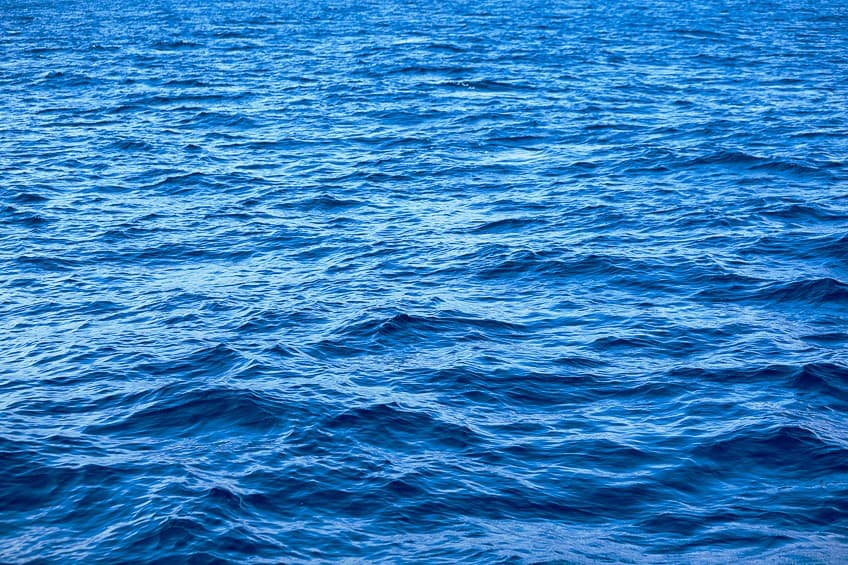
Meaning of Orange
Orange is the opposite of blue, being a warm color that is energetic, stimulating, uplifting, and full of enthusiasm. Orange can also be perceived as youthful, spontaneous, and optimistic. Orange is the color to choose if you wish to encourage communication and creativity. Unlike blue, orange is a great color to use in the dining area or kitchen, as it helps to stimulate the appetite. Too much orange can become overwhelming with its over-dominating presence.
Orange may also seem superficial and can be perceived as an attention seeker.
Mixing Blue and Orange Paint
When mixing paints, most artists use the RYG color model. This mixing method is also known as a subtractive color model since various color wavelengths are absorbed, while others are reflected. We have learned that blue is a primary color and orange is a secondary color, and they sit on opposing ends of the color wheel. These opposing hues are also referred to as complementary colors. When placed alongside one another, the blue and orange colors pop out at you, meaning they create contrast. This is often used to create interesting and eye-catching designs.
In color theory, blue and orange mixed will create a neutral shade of brown. This applies to all complementary colors. You can also use small amounts to create a more muted or dull version of a color. For example, use small amounts of blue to create a muted orange.

You can simply purchase brown paint, but you have more control over the outcome of the color if you start from scratch and use your primary colors. However, you might also have to experiment with creating a combination of blue and orange. This is because many red, blue, and yellow paints are not pure, and might contain other pigment colors. For example, you can get a warm blue or a cool blue. The first has a warm reddish undertone, while the second has a greenish undertone. When mixing colors, the proportions or ratios of each color will also affect the outcome of the brown color.
Creating Lighter and Darker Shades
Once you have created your shade of brown, you can adjust it by making it lighter or darker. You can create a tint, which lightens a color, by adding white to the brown. You can also create a shade of brown, which you can do by carefully adding a small amount of black. However, by changing the proportions of orange and blue, you can also create different brown hues. By adding more orange into the mix, you will create a warmer and more earthy type of brown. Including more blue will make a cooler and darker brown.
Remember, that there are different kinds of blues, some can be warmer, while others are cooler. This will affect the temperature and look of the final brown color.
Meaning of Brown
When thinking of brown, your first thoughts might be of the earth and wood. This is why brown is strongly connected to nature. Most brown hues are warm and soothing and evoke feelings of security. Brown is also a grounding and practical color that can be associated with strength, dependability, and safety.
Many might also associate brown with things like coffee, chocolate, or cinnamon, all comforting and positive connections.
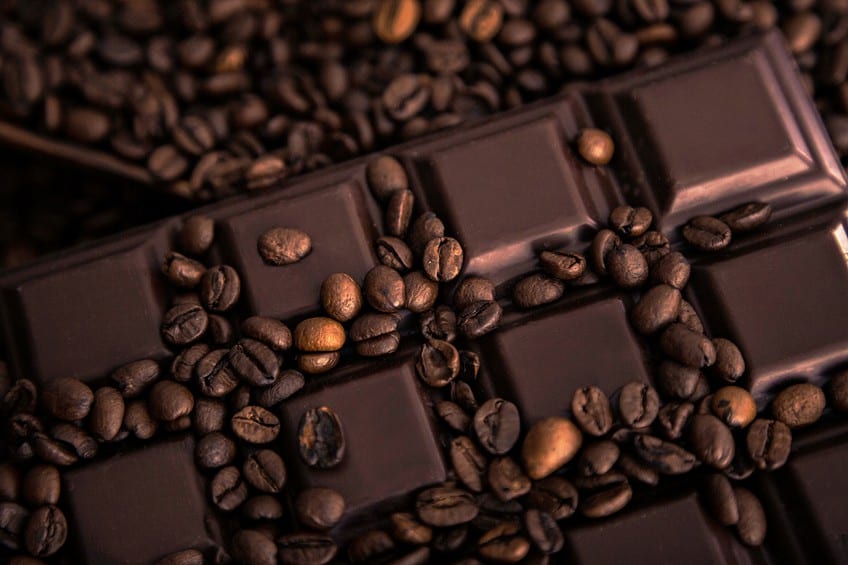
As with all colors, there are negative associations for brown as well. Too much brown can be perceived as lonely, sad, dull, predictable, and boring. Darker browns may evoke more sad associations than lighter tones of brown. Make sure to pair the darker browns with lighter shades of brown.
Understanding Blue and Orange in Other Color Models
When dealing with lights, like the images you see on your television set and computer, there is another color model that is used. In this case, you use the RGB or additive color model. An additive color layers the different colors in the color spectrum to produce a certain color. The primary hues here are red, green, and blue. Combining all these colors will deliver white light.
The secondary hues for this system include cyan, magenta, and yellow.
As you can see in the table below, the RGB code tells us that pure orange is a combination of red and green in different proportions. Blue is a primary color, so pure blue is 100 percent the color. Blue and orange mixed includes red, green, and blue, which are all the primary hues. So, instead of brown, here you will create white light. White is the color of innocence, peace, cleanliness, and purity. A simple purifying color that may also seem clinical and cold if used too much.
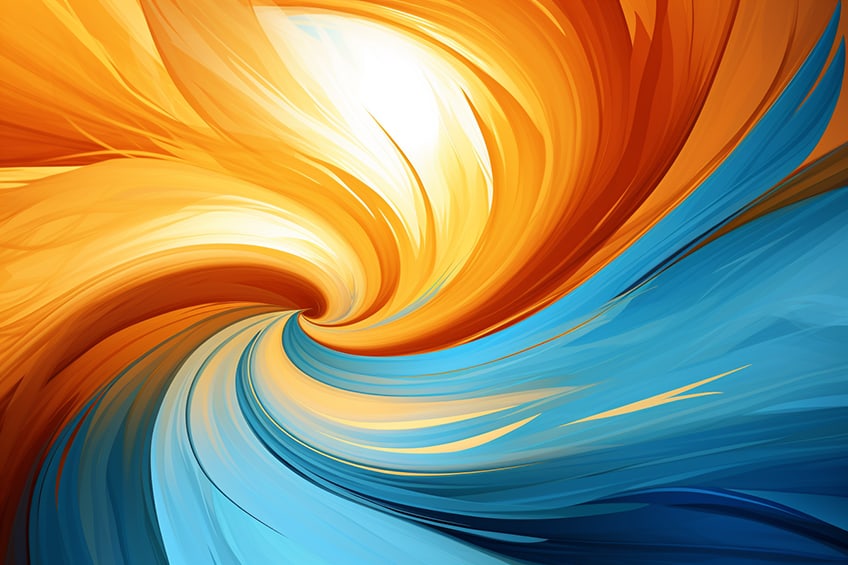
| Shade | Hex Code | CMYK Color Code (%) | RGB Color Code | Color |
| Orange | #ffa500 | 0, 35, 100, 0 | 255, 165, 0 | |
| Blue | #0000ff | 100, 100, 0, 0 | 0, 0, 255 | |
| White | #ffffff | 0, 0, 0, 0 | 255, 255, 255 |
Printing Color Model
This is another color model that is used when you print something. The ink colors used include cyan, magenta, yellow, and black. The primary hues cyan, magenta, and yellow are combined to form secondary colors. These are red, green, and blue. As you can see, blue is now a secondary color, a mixture of cyan and magenta, while orange is a mixture of magenta and yellow.
Again, a combination of blue and orange in this model brings together all the primary colors. Instead of white, it will produce black.
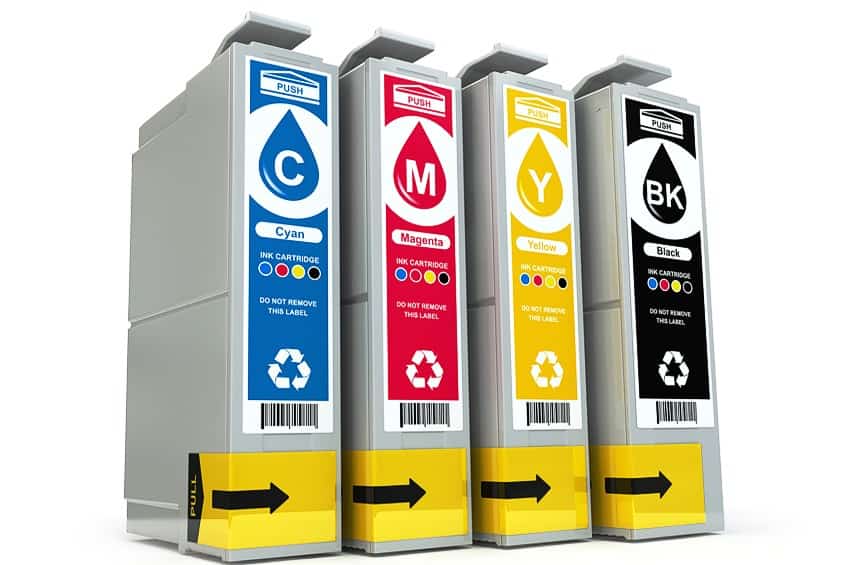
Even though all three primary colors make black, you also get a black cartridge when printing. This just makes the printing process more efficient, and you use less of your other ink colors. When looking at the meaning of black, it is often associated with sophistication, mystery, formality, and power. However, too much can be depressing and oppressive.
Best Uses for Blue and Orange in Art and Design
Blue and orange go quite well together in a design. However, too much of each color can become overwhelming. So, it is best to choose your main color and then use the other colors in moderation, or as accents. Brown is a neutral color, and the various shades easily work well with other colors, especially other neutrals like white, gray, and black.
When it comes to art, blue and orange are the perfect contrasting colors. Brown, on the other hand, can be used in many ways.

The neutral color can help to tone down a painting, and it is one of the useful colors for landscape paintings. Brown can also create underpaintings, especially for portraits, where it can help to create skin tones. There are many shades, tints, and tones to help you create the best painting, using any art medium. These colors are also used in many other design possibilities.
Graphic Design
When working with graphics, blue and orange can easily be adjusted by changing the brightness and saturation, among other things. Choosing the right colors for your brand is also important, as you want to convey the proper message. The color combination can be used to create a striking website or logo. However, depending on the colors, a more subdued effect can be created. Brown itself can also be used, as it is a color that represents friendliness, and trustworthiness.
A very approachable color that can help to instill confidence in the viewer. You can also use other shades of blue, orange, and brown to create an appealing color palette.
Fashion Design
Blue is a classic color in fashion and works very well with neutrals like brown and white. Orange is a color that can be used to make a statement or simply bring in a pop of color as an accent. A popular combination would be blue jeans and an orange shirt. Use brighter colors or softer colors to create different looks. Brown naturally fits into the combination as an accessory, for example, shoes or handbags.
Interior Design
Too much orange and blue together can be overwhelming. So, to create more balance, consider choosing one as your main color, while other colors play an accent role. Consider how an orange couch will stand out against a blue wall. Again, remember that there are numerous different shades of orange and blue to choose from. Softer colors or pastels are more calming and airier, while darker blues provide more depth and drama. You can also stick to a more neutral theme and bring in blue and orange as accents. This can be done through rugs, furniture, paintings, cushions, or any other accessory or design element.
Blue and orange work wonderfully with white, black, gray, and beige neutrals. Do not forget to play with different patterns and textures to make the look more appealing.

When using brown in a space, too much can become boring. Consider utilizing various shades of brown to create more of a monochromatic combination, which can provide a sense of depth. Brown can be brought in through fabrics and paint, but you can also bring it in by using natural wood elements. Again, combine other neutrals like white and black with brown, to add more depth to the space. Metallic elements, such as gold, bronze, and copper, work wonderfully with a warm brown.
Blue and orange mixed can produce varying results, depending on the medium you choose. We have seen how blue and orange can make brown with paints, and how it produces white or black in other color models. For your next painting project, why not enjoy experimenting and exploring the varieties of browns you can make by mixing blue and orange!
Frequently Asked Questions
What Color Does Blue and Orange Make?
Blue is a primary hue, while orange is a secondary hue that sits opposite blue on the color wheel. When these two colors are mixed, they will form a shade of brown.
What Happens When Blue and Orange Mix?
Blue and orange are complementary hues, so when these two colors are mixed, the colors are neutralized. This is because all primary colors are being combined. Since different proportions of both blue and orange are often used, it creates a brown. However, if all three pure primary colors are mixed in exact equal proportions, it should produce a shade of gray.
What Color Does Coral and Light Blue Make?
Coral is a lighter shade of pink-orange, so combining this with a light blue will create a muted orange-brown that could have purplish undertones. The type of brown will depend on the different shades and proportions used.
In 2005, Charlene completed her Wellness Diplomas in Therapeutic Aromatherapy and Reflexology from the International School of Reflexology and Meridian Therapy. She worked for a company offering corporate wellness programs for a couple of years, before opening up her own therapy practice. It was in 2015 that a friend, who was a digital marketer, asked her to join her company as a content creator, and this is where she found her excitement for writing.
Since joining the content writing world, she has gained a lot of experience over the years writing on a diverse selection of topics, from beauty, health, wellness, travel, and more. Due to various circumstances, she had to close her therapy practice and is now a full-time freelance writer. Being a creative person, she could not pass up the opportunity to contribute to the Art in Context team, where is was in her element, writing about a variety of art and craft topics. Contributing articles for over three years now, her knowledge in this area has grown, and she has gotten to explore her creativity and improve her research and writing skills.
Charlene Lewis has been working for artincontext.org since the relaunch in 2020. She is an experienced writer and mainly focuses on the topics of color theory, painting and drawing.
Learn more about Charlene Lewis and the Art in Context Team.
Cite this Article
Charlene, Lewis, “What Color Does Blue and Orange Make? – Mix Shades of Brown.” Art in Context. November 13, 2023. URL: https://artincontext.org/what-color-does-blue-and-orange-make/
Lewis, C. (2023, 13 November). What Color Does Blue and Orange Make? – Mix Shades of Brown. Art in Context. https://artincontext.org/what-color-does-blue-and-orange-make/
Lewis, Charlene. “What Color Does Blue and Orange Make? – Mix Shades of Brown.” Art in Context, November 13, 2023. https://artincontext.org/what-color-does-blue-and-orange-make/.





